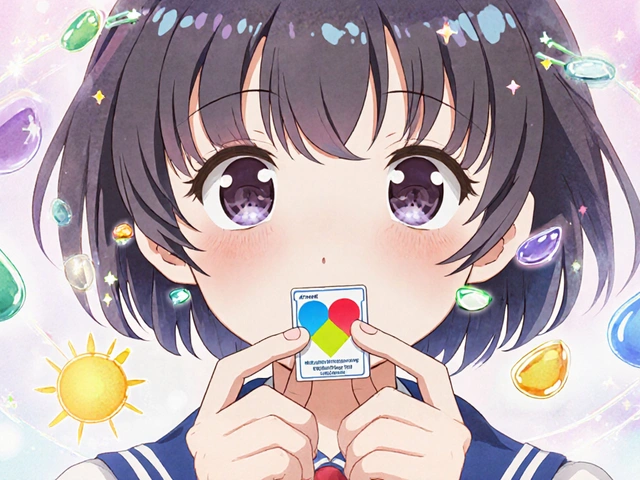Most people with high blood pressure need more than one pill to get their numbers under control. That’s not a failure-it’s science. About 70-80% of patients require two or more medications to hit the target of 130/80 mmHg or lower. But taking three separate pills every day? It’s easy to forget one. That’s where antihypertensive combination generics come in-single tablets that pack two or even three blood pressure drugs into one. They’re not new, but their availability, cost, and insurance coverage are messy. Here’s what you actually need to know.
What Are Antihypertensive Combination Generics?
These are called Single-Pill Combinations (SPCs) or Fixed-Dose Combinations (FDCs). They combine two or three blood pressure medications into one tablet. Common pairs include:- Amlodipine + Benazepril (Lotrel)
- Losartan + Hydrochlorothiazide (Hyzaar)
- Amlodipine + Valsartan (Exforge)
- Olmesartan + Amlodipine (Azor)
Why Do These Combinations Matter?
It’s not just about convenience. Taking fewer pills means you’re more likely to take them. Studies show people on combination pills are 15-25% more adherent than those taking the same drugs separately. That’s huge. Poor adherence is one of the top reasons blood pressure stays uncontrolled, leading to strokes, heart attacks, and kidney damage. A 2018 trial called STRIP found that 68% of patients on a combination pill reached their blood pressure goal, compared to just 45% on single pills taken one after another. That’s not a small difference-it’s life-changing. And yes, cost matters. Generic SPCs are cheaper than branded versions. But here’s the twist: sometimes, buying the individual generics separately is even cheaper.Cost Comparison: Combo Pill vs. Separate Generics
GoodRx prices from October 2023 show:- Generic Hyzaar (losartan/HCTZ 50/12.5mg): $10.60/month
- Generic Lotrel (amlodipine/benazepril 5/20mg): $17.55/month
- Generic Lotensin HCT (benazepril/HCTZ 10/12.5mg): $38.05/month
- Generic amlodipine (5mg): $4.50/month
- Generic valsartan (80mg): $7.80/month
- Combined cost: $12.30/month
- Generic Exforge (amlodipine/valsartan 5/80mg): $18.75/month
What’s Actually Available in the U.S.?
As of 2023, the FDA lists over 30 generic combination antihypertensives. Here’s a breakdown of the most common types:| Combination Type | Example Brand (Generic Equivalent) | Typical Dosages | Available as Generic? |
|---|---|---|---|
| ACEi + Thiazide | Lisinopril/HCTZ (Zestoretic) | 10/12.5mg, 20/25mg | Yes |
| ARB + Thiazide | Losartan/HCTZ (Hyzaar) | 50/12.5mg, 100/25mg | Yes |
| CCB + ACEi | Amlodipine/Benazepril (Lotrel) | 2.5/10mg, 5/20mg, 10/40mg | Yes |
| CCB + ARB | Amlodipine/Valsartan (Exforge) | 5/80mg, 10/160mg | Yes |
| Triple Combo | Amlodipine/Valsartan/HCTZ | 5/160/12.5mg, 10/160/12.5mg | Yes |
| CCB + ARB + Diuretic | Aliskiren/amlodipine/HCTZ | 150/5/12.5mg | Yes (limited) |
Most of these are available as generics from multiple manufacturers. The FDA requires generics to be bioequivalent-meaning they deliver the same amount of drug into your bloodstream as the brand, within a 80-125% range. That’s strict. If a generic passes, it works.

The Big Problem: Insurance Doesn’t Always Cover the Combo
Here’s where things get frustrating. Many insurance plans cover the individual generic pills for $5-$10 each. But they charge $40+ for the combo pill-even though the pharmacy pays the same amount for both. A patient on PatientsLikeMe wrote: “My insurance covers amlodipine for $5, valsartan for $5, and HCTZ for $5. But the combo? $45. Why? I don’t get it.” This isn’t rare. In fact, 32% of patients who tried SPCs stopped because their insurance didn’t cover it, even when the individual drugs were covered. Some insurers see the combo as “brand-like” and put it in a higher tier. Others don’t even list it as preferred. Pro tip: Always ask your pharmacist to check the cost of the combo vs. the separate pills. Sometimes, you can pay cash for the combo and still save money.Dosing Flexibility: The Hidden Limitation
Combination pills are great-until you need to change the dose. Let’s say your doctor wants you on amlodipine 2.5mg and olmesartan 40mg. That exact combo doesn’t exist. Azor only comes in 5/20mg or 10/40mg. So you have to switch to two pills: one amlodipine 2.5mg and one olmesartan 40mg. This is a major downside. If your dose needs to be fine-tuned, you lose the convenience. Some patients end up on a combo that’s too strong on one drug and too weak on another, just because the right combo isn’t made. Clinicians often need to try 3-5 patients before they feel confident picking the right combo. It’s not just about what’s available-it’s about matching the right dose to the right person.Global Availability: The Gap Between Access and Need
In the U.S., 85% of combination antihypertensive prescriptions are generic. But globally, it’s a different story. In low-income countries, less than 15% of patients have access to these combos-even though 95% of them need them. The WHO says only half of low-income countries stock essential antihypertensive medicines. In places like Ethiopia, Afghanistan, and Morocco, even generic combos are hard to find. That’s not a supply issue-it’s a policy one. Many countries don’t include SPCs in their national treatment guidelines. So doctors don’t prescribe them. Pharmacies don’t stock them. Patients don’t get them. The result? Only 7.1% of hypertension patients in low-income countries reach their blood pressure goal. In the U.S., it’s 57.9%. That gap isn’t about science-it’s about access.
What Should You Do?
If you’re on multiple blood pressure pills:- Ask your doctor: “Is there a generic combo that matches my current doses?”
- Ask your pharmacist: “What’s the cash price of the combo vs. my three separate pills?”
- If your insurance won’t cover the combo, ask for a prior authorization or appeal.
- If you’re on a triple combo, make sure you’re on a version that actually exists-some combinations are only available as branded pills.
Don’t assume the combo is more expensive. Sometimes, it’s cheaper. Sometimes, it’s not. But if you’re forgetting pills, switching to a combo could be the simplest fix.
What’s Coming Next?
The FDA released new draft guidance in September 2023 to make it easier to approve new generic combinations. That means more options are coming-especially triple combos. A 2022 study in Hypertension journal predicted that if triple-combination generics became widely available in low-income countries, they could cut the hypertension treatment gap by 35%. That’s not a guess-it’s a projection based on real-world data. But availability alone won’t fix this. Doctors need training. Pharmacies need to stock them. Insurance needs to cover them. And patients need to know they exist.Are antihypertensive combination generics safe?
Yes. The FDA requires generic combination pills to prove they deliver the same amount of medicine into your bloodstream as the brand-name version. This is called bioequivalence, and it’s tested in healthy volunteers. If a generic passes, it works just as well. Thousands of patients use these daily with no safety issues.
Can I split a combination pill if my dose is too high?
Only if the pill is scored (has a line down the middle). Some, like amiloride/HCTZ, are scored and can be split safely. Others, like amlodipine/valsartan, are not. Never split an unscored pill-it can change how the drug is absorbed. If you need a lower dose, ask your doctor for a different combination or switch to separate pills.
Why does my insurance cover the individual pills but not the combo?
Insurance companies often classify combination pills as “brand” even when they’re generic, especially if they’re newer or less commonly prescribed. They may also have a policy that only covers the cheapest option-which is usually the separate generics. You can appeal, ask for a formulary exception, or pay cash if the combo is cheaper out-of-pocket.
Is there a combo pill for every blood pressure drug?
No. Only certain combinations are approved and manufactured. Common ones include ACE inhibitors, ARBs, calcium channel blockers, and thiazide diuretics. Drugs like beta-blockers or alpha-blockers rarely appear in combos. If your doctor wants to combine two drugs that don’t have a generic pill, you’ll need to take them separately.
How do I know if a generic combo is right for me?
Ask three things: 1) Does the combo match your current doses? 2) Is it cheaper than buying separate pills? 3) Will my insurance cover it? If yes to all three, it’s likely a good fit. If your doses don’t match or you need flexibility to adjust, separate pills may be better. Talk to your pharmacist-they can run the numbers for you.








Matthew Mahar November 22, 2025
OMG I JUST REALIZED I’VE BEEN PAYING $45 FOR A COMBO PILLS WHEN I COULD’VE BEEN PAYING $15 FOR THREE SEPARATE ONES???!?!?!?!?!? My pharmacist never told me this-why is this even a thing?? I feel so scammed. I’ve been taking this combo for 3 years and never checked the cash price. I’m switching tomorrow. Also, why does insurance hate us???
John Mackaill November 23, 2025
Interesting breakdown, but I’d caution against assuming the combo is always worse. My dad’s on amlodipine/valsartan and his adherence went from 60% to 95%-he literally forgot one pill every other day before. The cost difference was negligible for him, and his BP dropped 20 points. Sometimes convenience > cost savings. Also, don’t forget that splitting pills can be dangerous if they’re not scored. Just sayin’.
Adrian Rios November 24, 2025
Let me just say this: the real tragedy here isn’t the cost or the insurance nonsense-it’s that we’ve turned healthcare into a puzzle where patients have to become pharmacists, actuaries, and legal advocates just to get basic care. You’re telling me that a pill made of two generic drugs, approved by the FDA, bioequivalent, manufactured by the same company that makes the individual pills, costs 3x more just because it’s packaged together? That’s not capitalism-it’s exploitation dressed up as formulary management. And don’t even get me started on the fact that doctors don’t even know what combos are available half the time. I’ve seen patients get prescribed three separate pills because their doctor didn’t know Azor existed. This isn’t a system failure-it’s a systemic betrayal. And yet, we’re supposed to be grateful when we find a pharmacist who actually checks the cash price for us. We need policy reform, not just better shopping skills.
Casper van Hoof November 25, 2025
One must consider the epistemological implications of pharmaceutical consolidation: the commodification of therapeutic efficacy into a singular dosage form obscures the individualized nature of physiological response. The conflation of convenience with clinical superiority represents a technocratic reductionism that prioritizes administrative efficiency over patient autonomy. Moreover, the insurance industry’s tiered formularies function as a form of latent rationing, wherein cost-minimization becomes the primary heuristic for therapeutic decision-making, thereby displacing clinical judgment. One might argue that the proliferation of combination generics reflects not progress, but the institutionalization of pharmacological compromise.
Richard Wöhrl November 27, 2025
Just a heads-up: if you're considering a combo pill, always check the exact milligram strengths. For example, if your doctor wants you on 10mg amlodipine + 80mg valsartan, Exforge comes in 5/80 or 10/160-but NOT 10/80. So you’d have to take a 5/80 and a 5/80, which is two pills. That defeats the purpose. Also, if you're on a triple combo like amlodipine/valsartan/HCTZ, make sure it's the 12.5mg HCTZ version-not the 25mg-unless your kidney function is perfect. And yes, some pharmacies will charge you $50 for the combo even if the individual pills are $12 total. Always ask for the cash price. Always. And if you’re on Medicare Part D, check your plan’s formulary-it’s wild how different they are. I’ve seen patients pay $300/month for a combo that was $15 cash at Walmart. Seriously. Don’t trust the website. Call the pharmacy.
Pramod Kumar November 28, 2025
Bro, this is the same story in India. We got the combos, but only in fancy private hospitals. In government clinics? You get one pill. Maybe two. If you’re lucky. I saw a guy with BP 190/110 on just amlodipine because that’s all they had. No HCTZ. No ARB. Just one. And he’s supposed to live? We need these combos everywhere-not just for rich folks. And yeah, insurance here doesn’t cover them either. We pay out of pocket. But at least the generics are cheap. Like, $2 a month cheap. So if you’re in the US and paying $40 for a combo? You’re being robbed. Here, we’d be celebrating.
Brandy Walley November 30, 2025
So you’re telling me people are actually taking three pills a day? Like, why? Just take one. Or don’t take any. I don’t get why we make medicine so complicated. My uncle had high BP and he just started eating celery and yoga. Now he’s fine. No pills. Maybe we’re overmedicating? Also, I think insurance is right to not cover combos. Why pay more for convenience? That’s like paying extra for pre-chopped onions. Gross.
shreyas yashas November 30, 2025
lol i used to take 3 pills a day. then my doc gave me a combo. i forgot to take it once. i was like... wait did i take it? i checked my pillbox. one slot. one pill. no stress. i feel like a genius now. also, cash price for combo was $11. separate pills were $14. so i won. also, my mom’s in india and she gets a combo for $1.50. i cried.
Suresh Ramaiyan December 1, 2025
There’s something beautiful in the simplicity of this: one pill, one habit. We live in a world that glorifies complexity-more apps, more options, more choices-but when it comes to our health, sometimes the most radical act is to reduce. To simplify. To take one thing instead of three. It’s not just about adherence-it’s about reclaiming dignity. The fact that we have to fight insurance, pharmacy tiers, and doctor ignorance just to get a pill that’s scientifically proven to help us live longer… that’s not a medical issue. That’s a moral one. We’ve built systems that reward profit over presence. But you? You’re still here. Still trying. Still asking. That’s the quiet revolution.